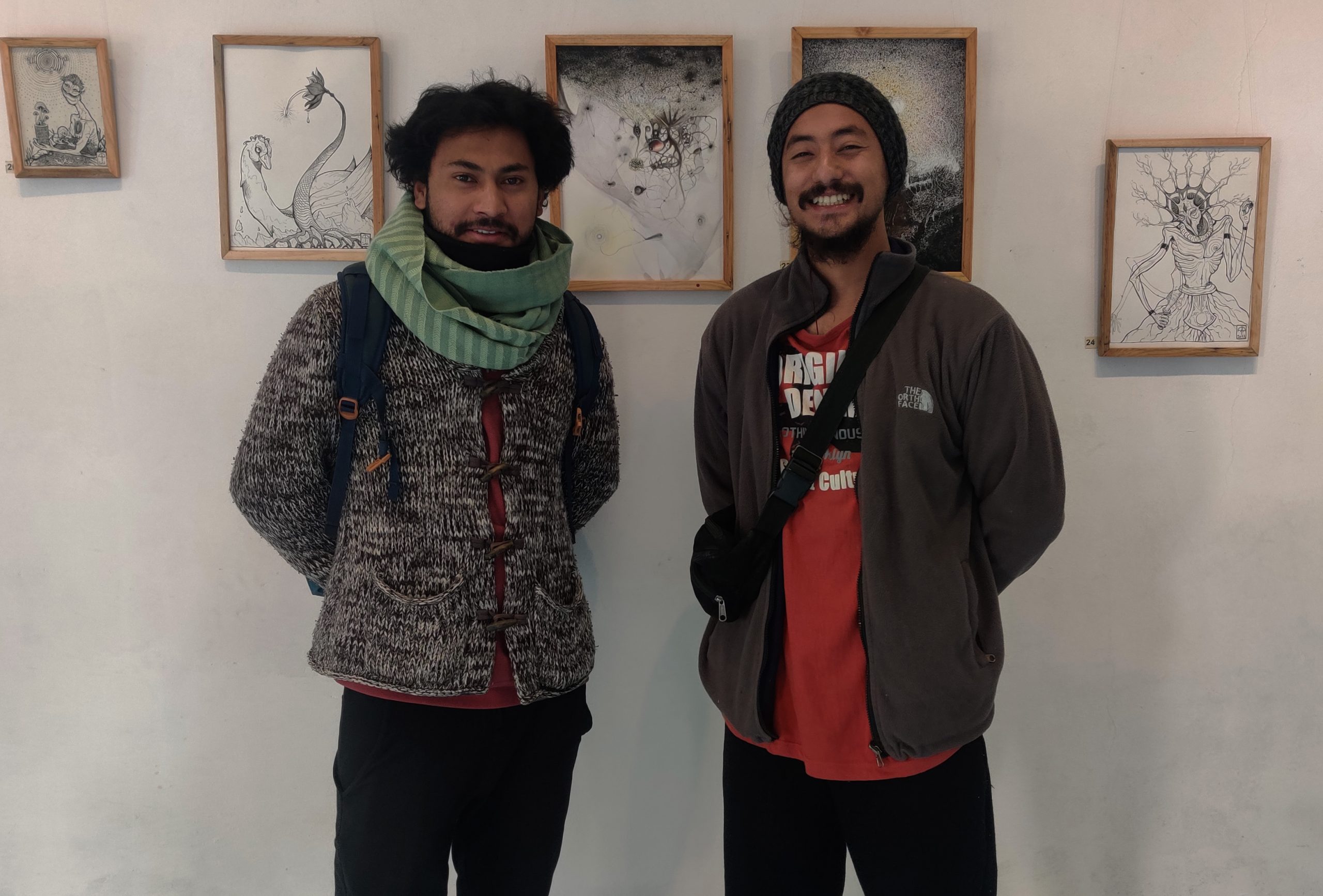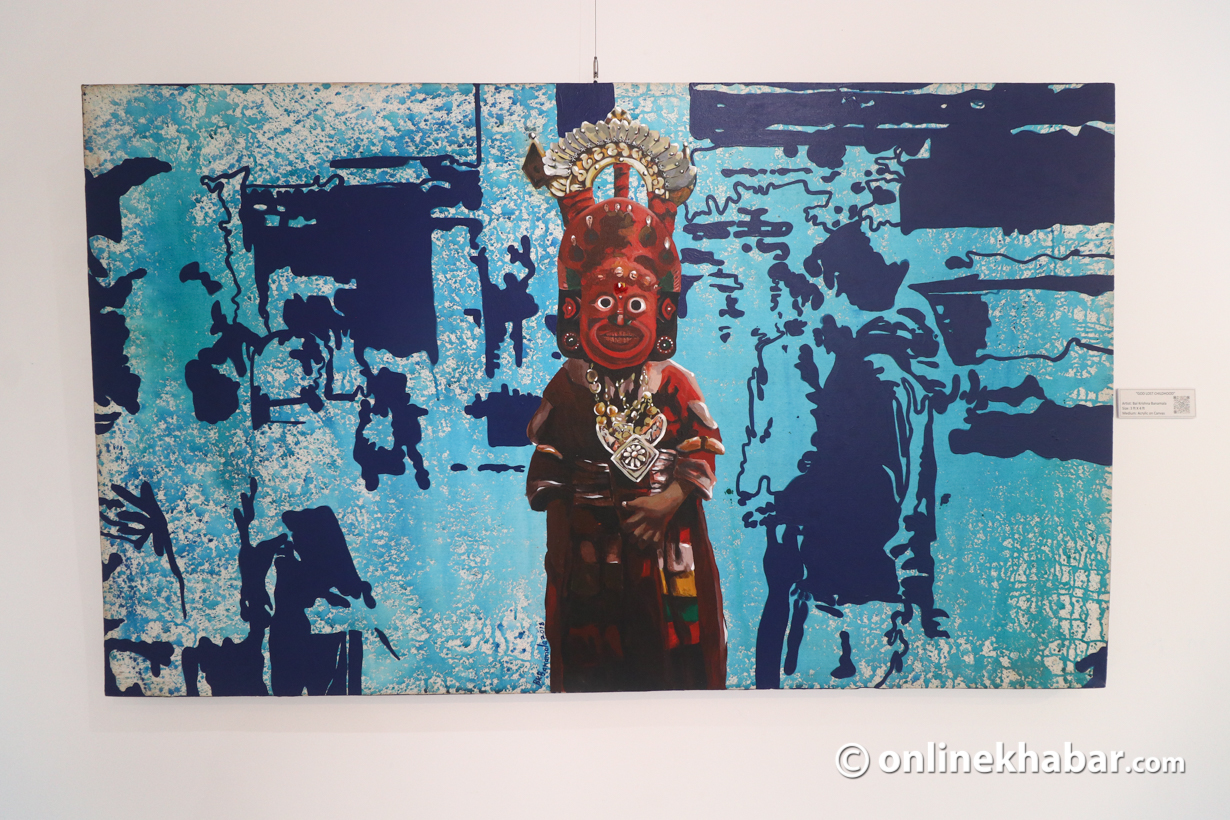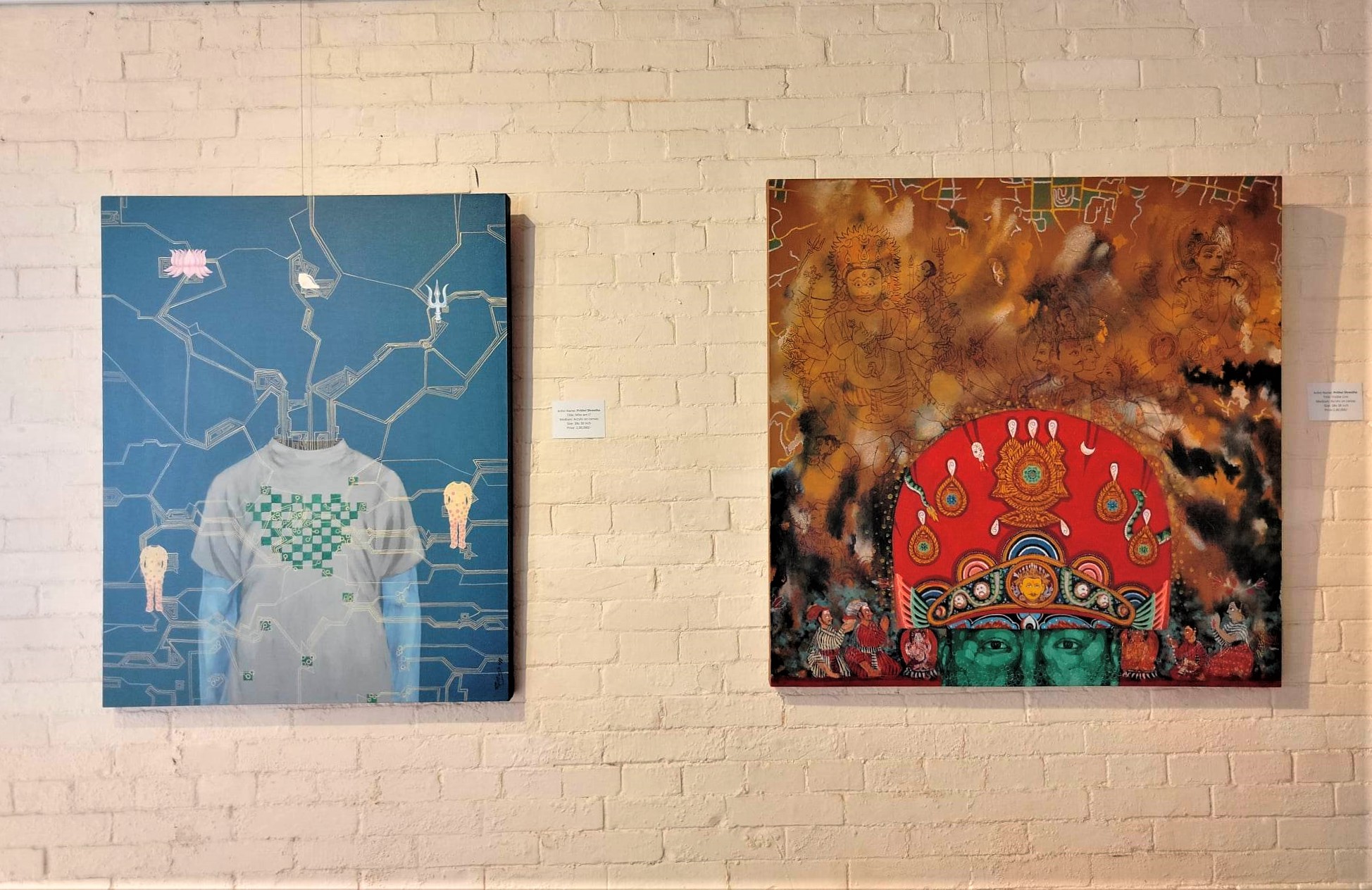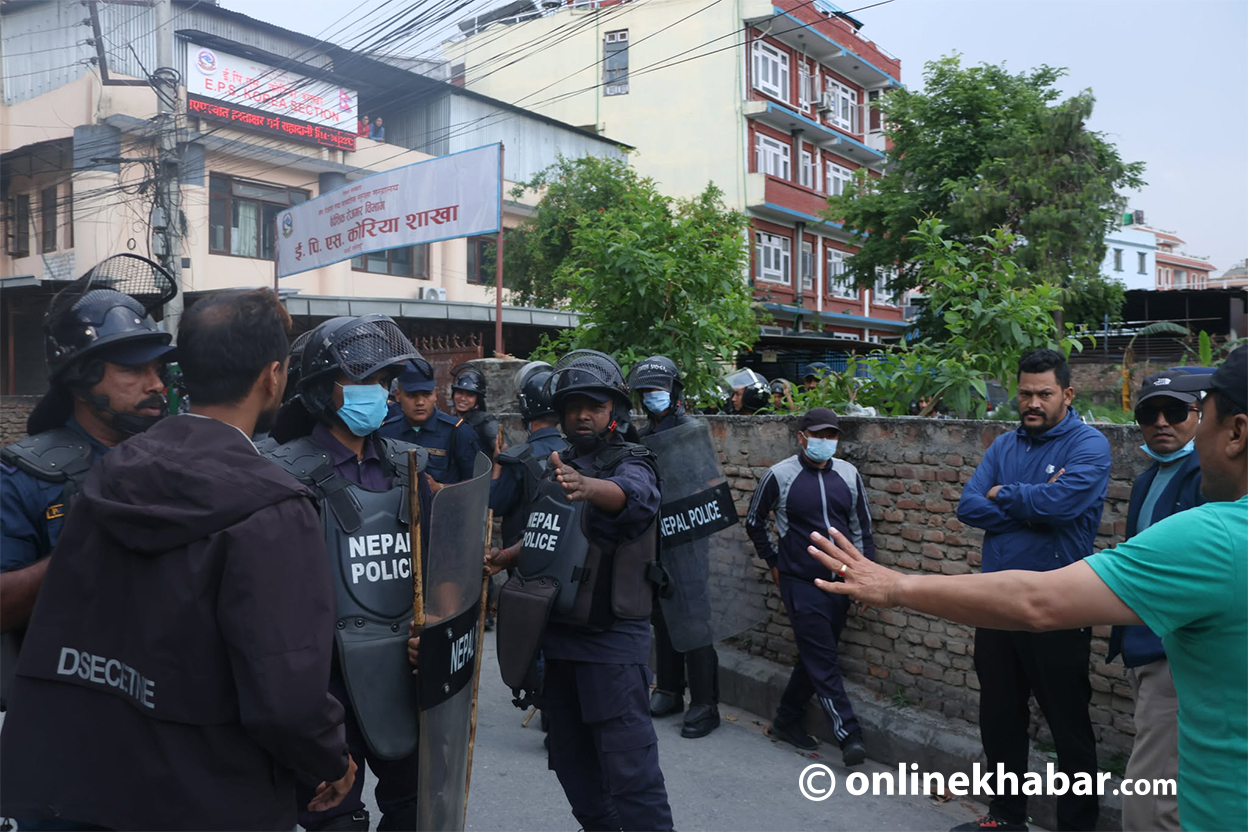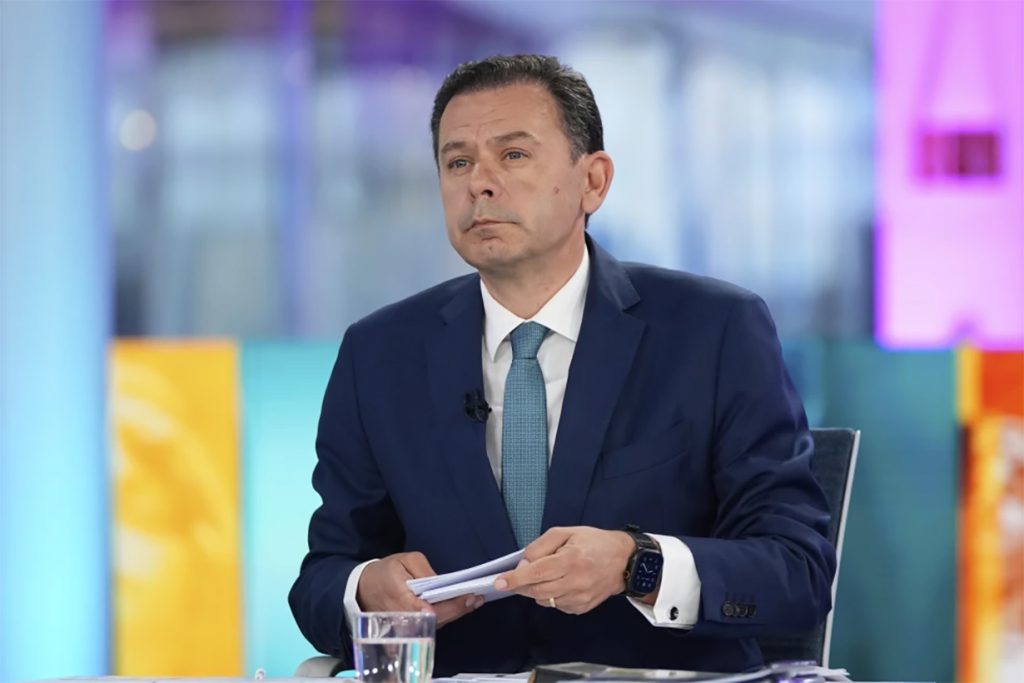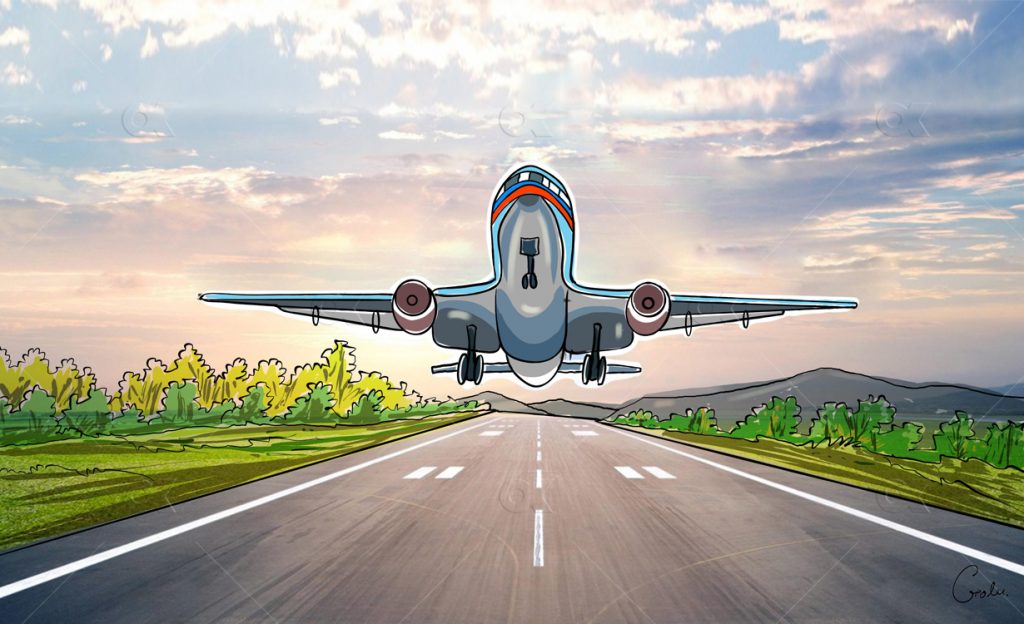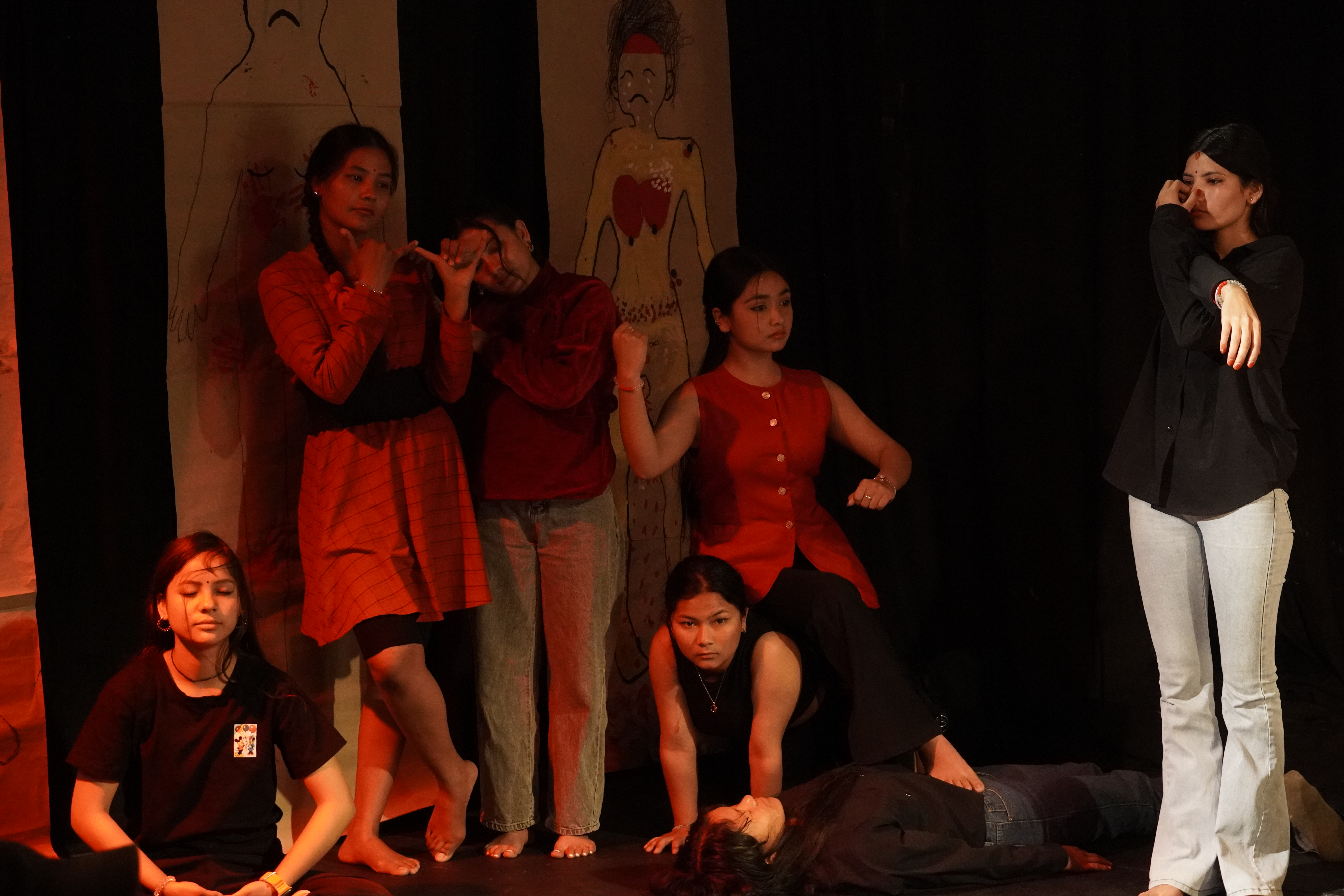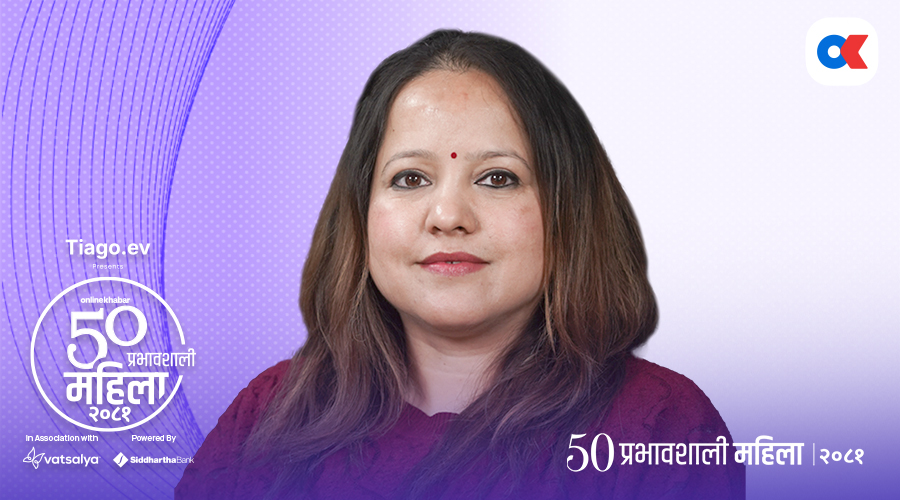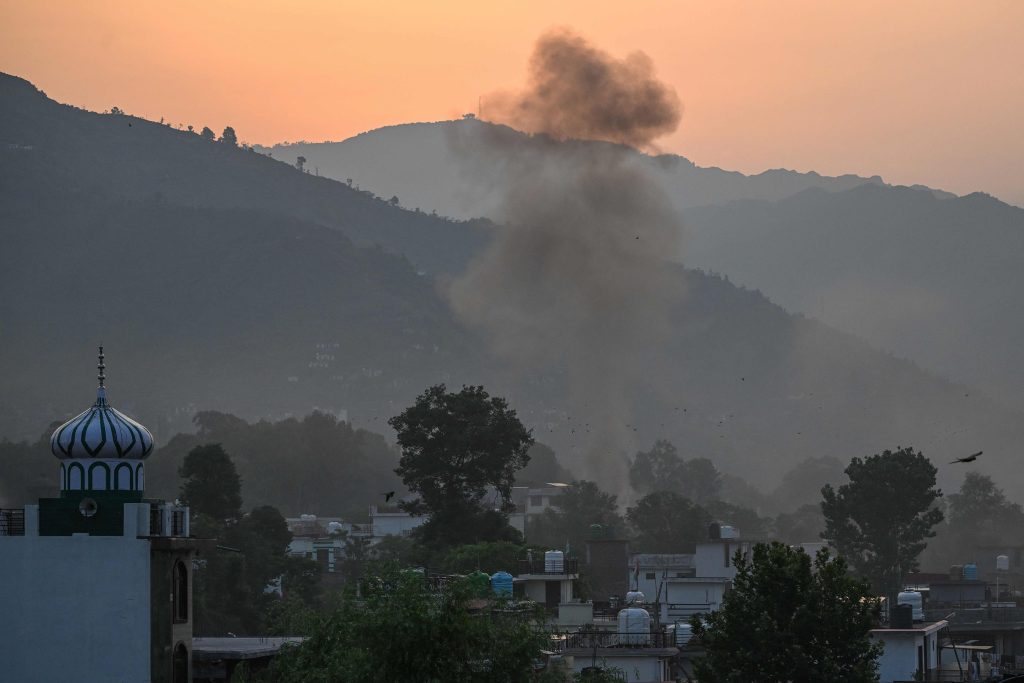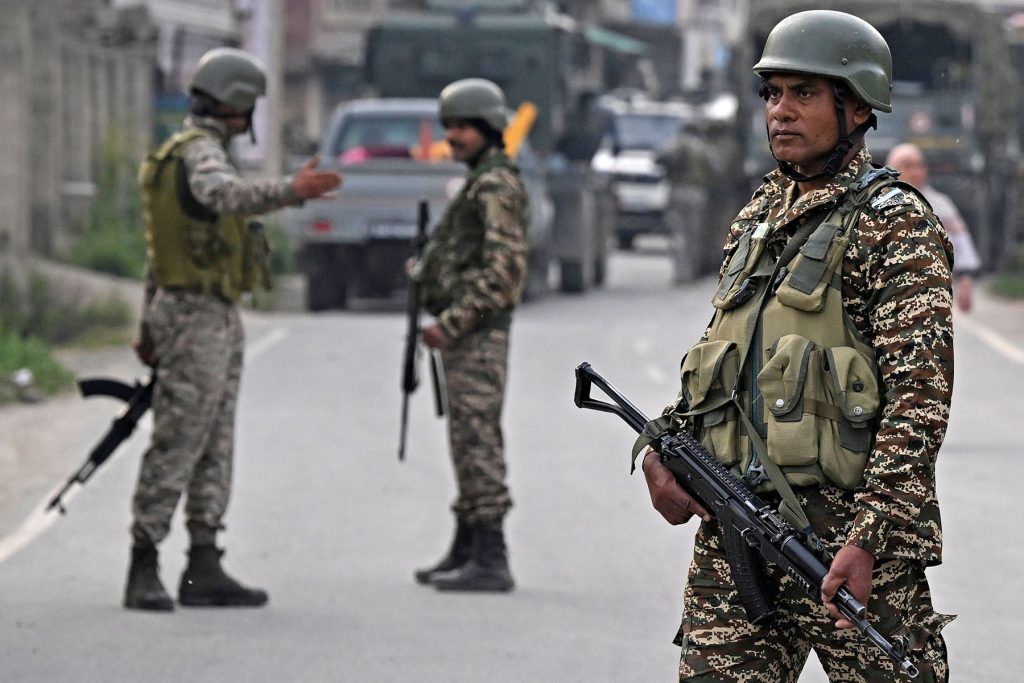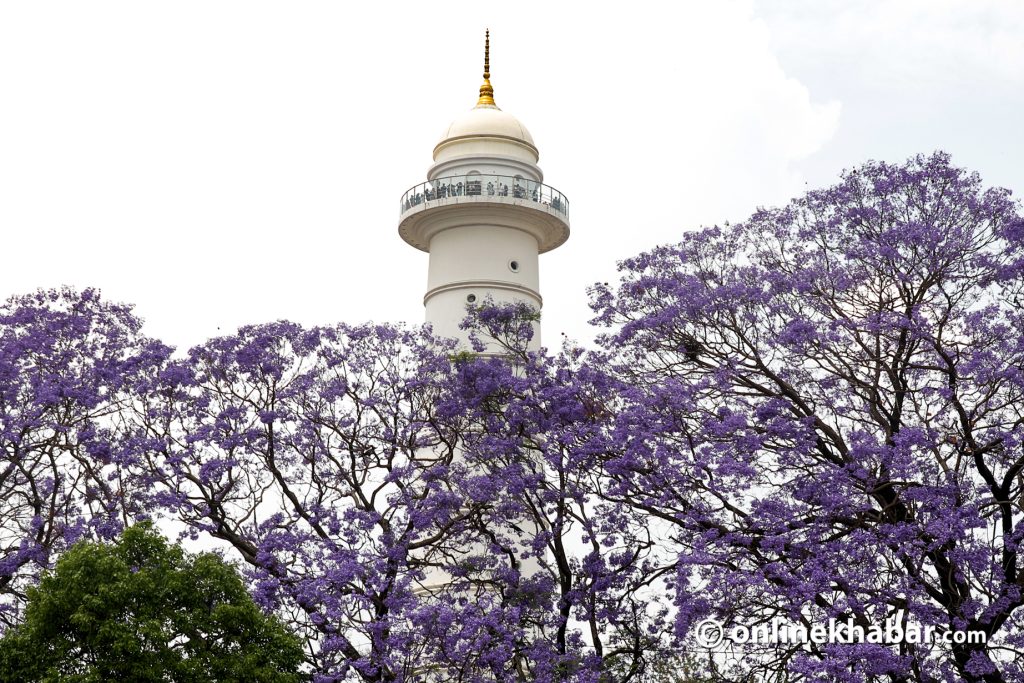If you walk into the Bikalpa Art Center’s gallery this time around, you will witness a series of ‘weird’ artworks. Many have been intrigued while others have been pleasantly surprised by the art that a duo of emerging artists have put together. Named ‘Solace of Mind, Fractal Utopia’, the exhibition has been received as a fresh take on definitions of art and life and the connections between the two.
Contrary to human nature that is inclined to detect symmetry, patterns and familiarity, the duo have chosen to go out of the way and bring a concept of a new world that is part envisioned in a post-apocalyptic scenario and part in a trans-sensory realm. The duo Shushant Rajbhandari (Ryan) and Sunil Pandey define their work as surrealism art.
A new take
“Imagine a world that is 10,000 years ahead, where the earth has been destroyed and uninhabitable. Humans have descended to live underground and there the evolution plays its role for humans to survive,” explains Rajbhandari about his work exhibited at Fractal Utopia, “As evolution is always making trials and errors, surviving humans and animals now have borrowed features from each other.”
Meanwhile, Pandey explains, “There is a world beyond what we see, around us. When I meditate, I feel connected to that realm. My art imagines the world in a landscape that portrays the subconscious reality I have envisioned and experienced.”
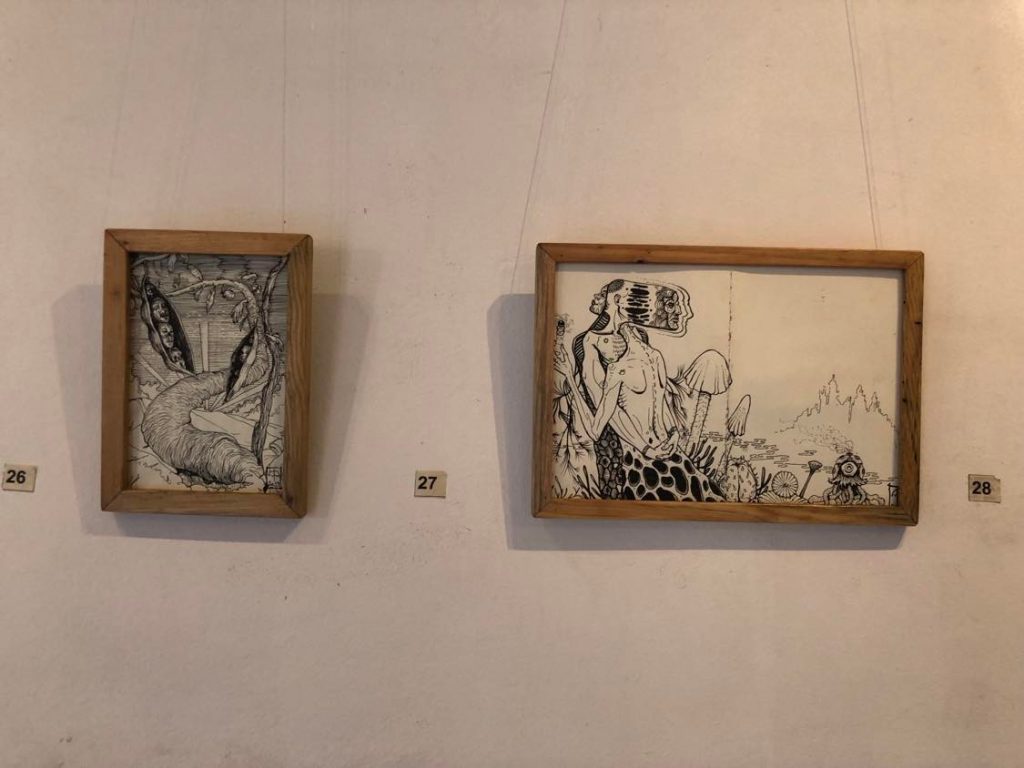
The duo met each other at Bikalpa’s residency programme and were paired together, suggested by BAC founder and exhibition curator Saroj Mahato, for their common take on their art and perspective of the world.
At the exhibition Fractal Utopia, both the new artists use imagination as their tools and meditate to visualise a new realm of art that they draw in their sketchbooks and canvasses. But behind their approach to art, they say, the shift came after they became art students.
“After a semester or two, the monotonous routine frustrated me. We were taught more to perfect the shapes and depictions, compared with other artists. Yet the notion did not connect with me, neither did I find that healthy. Then on a trip, I got familiar with a group of senior artists that introduced the concept of surrealism,” Rajbhandari shares, ‘And, after my own research, I came across the concept of speculative biology, zoology and then artists like Dali, Beksinski. So I found a whole new world of art that redefined the meaning of art for me.”
“Our reality is too chaotic and my art is my escape from it. So I work around more with lines and distorted forms to express,” he adds, saying art should not be defined by notions.
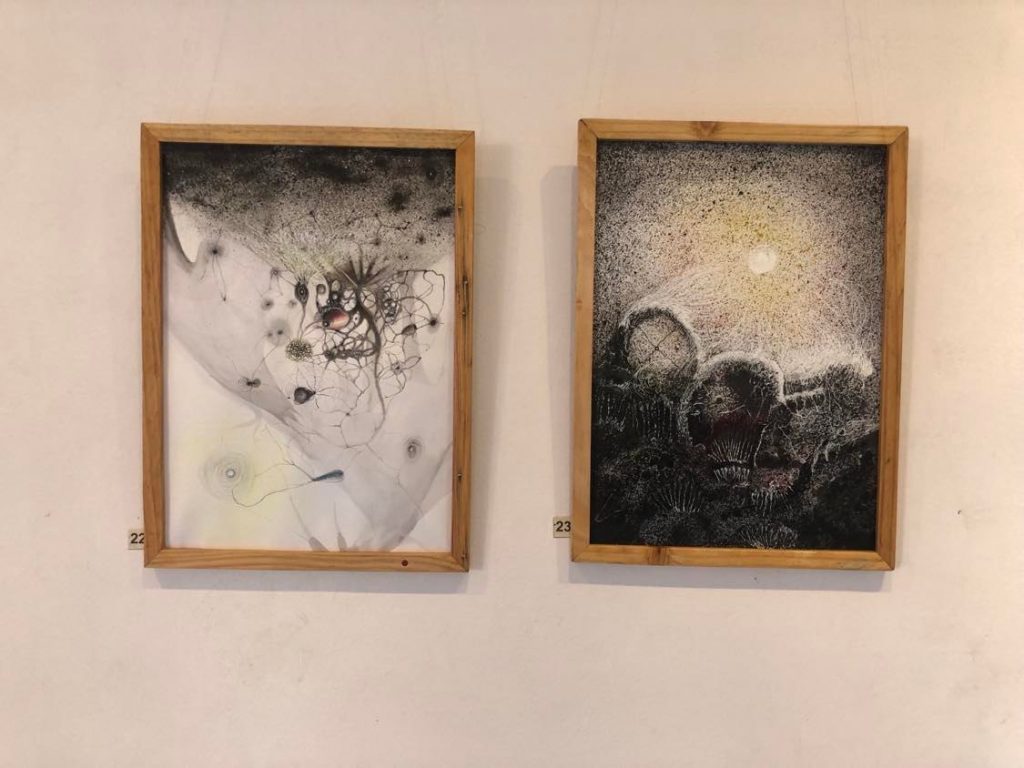
For Pandey, the process has been a bit different. “I started with replacement approach, through which I took the everyday scenario and replaced them with something completely different, creating what feels surreal. After that, I have started replicating the vision and portraying just that.”
“I look at the artist I was before and now, and I see so much growth in me. And most of all, I get a sense of peace as I have been able to portray my imagination. I feel I have adopted an automatism approach and I mostly do it in one sitting,” adds Pandey.
“I used to draw or sketch since childhood. My family was supportive of my inclination. But, in retrospect, I was very conscious of how the shapes would be like, what forms my elements would take and what I am depicting. Now it is more free-flowing, expressive and comfortable,” says Rajbhandari.
Feeling art

Fractal Utopia does not just let you see art but feel the art and be a part of it too. In an adjacent room, the artists have set up an installation of their work that takes the art pieces and places them in an interactive 3D format.
“Being here will not just trigger your sight, but other senses too like sound, touch and smell. We have played on shamanic music and placed a burning incense here that does just that. All the elements here can be touched so anyone can just walk into the space and be a part of the art,” Rajbhandari explains, “We have set the place taking elements from nature so you feel that you are a part of it too.”
“We hope the installation transcends that art experience among people,” adds Pandey, who hopes that people who visit Fractal Utopia can connect to a different realm too, like them. As suggested by the name, the duo have played with the concept of lines and connections too.
And with a few of such interactions, both are happy that people are receiving their artwork as intended. “A foreign friend came to see the exhibition. He said that the installation, in particular, was very nostalgic for him and it took him back to his childhood when he wandered into the pine forest and would feel a strange silence, followed by peace, being there,” shares Rajbhandari.
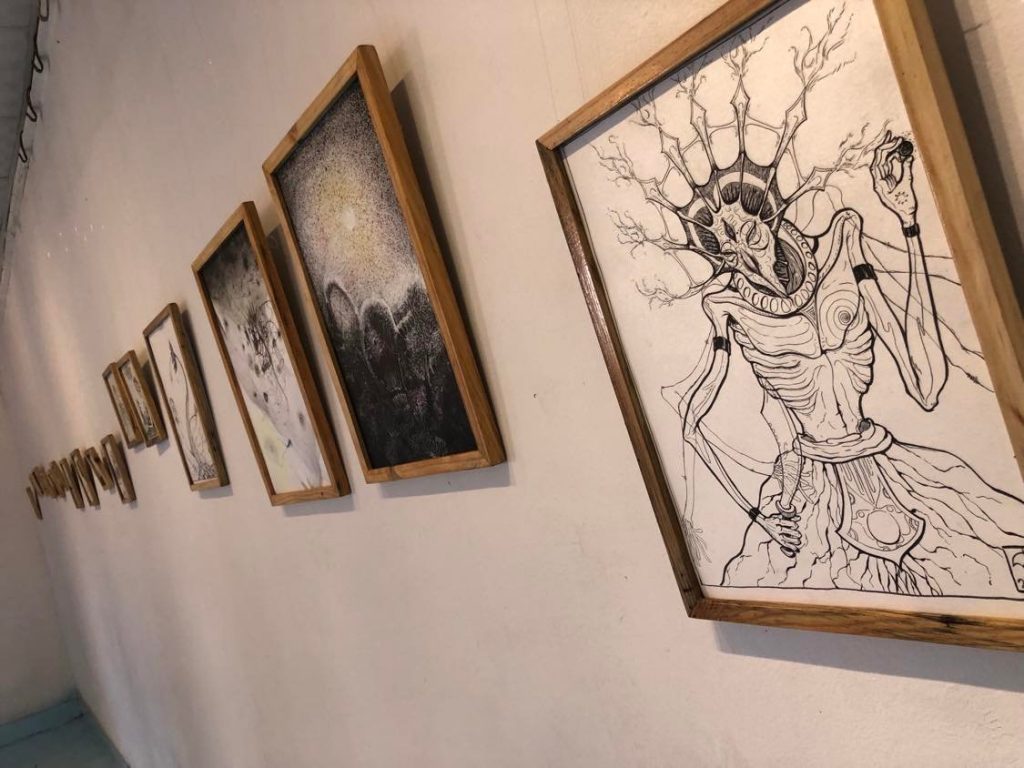
In observation of filmmaker Amit Pokhrel, one of the visitors of Fractal Utopia, “The artworks have really captured the nuances of a realm that is different from ours, or that we are used to. It is a new take on the everyday things that is fresh to experience. Very few artists, and probably none that I have witnessed, have explored such dynamics. The exhibition shows how art can be an escape and an effective tool to express for those who are trying to dissect their subconscious but their inhibitions may be in the way.”
The exhibition ‘Fractal Utopia’ started on Friday, December 31, 2021. In a week of showing their artwork, the artists have seen some positive and some usual reactions from people.
Before this, the duo individually did group exhibitions. But, they share, the partnership has been great and are looking forward to new opportunities together with new artworks.



